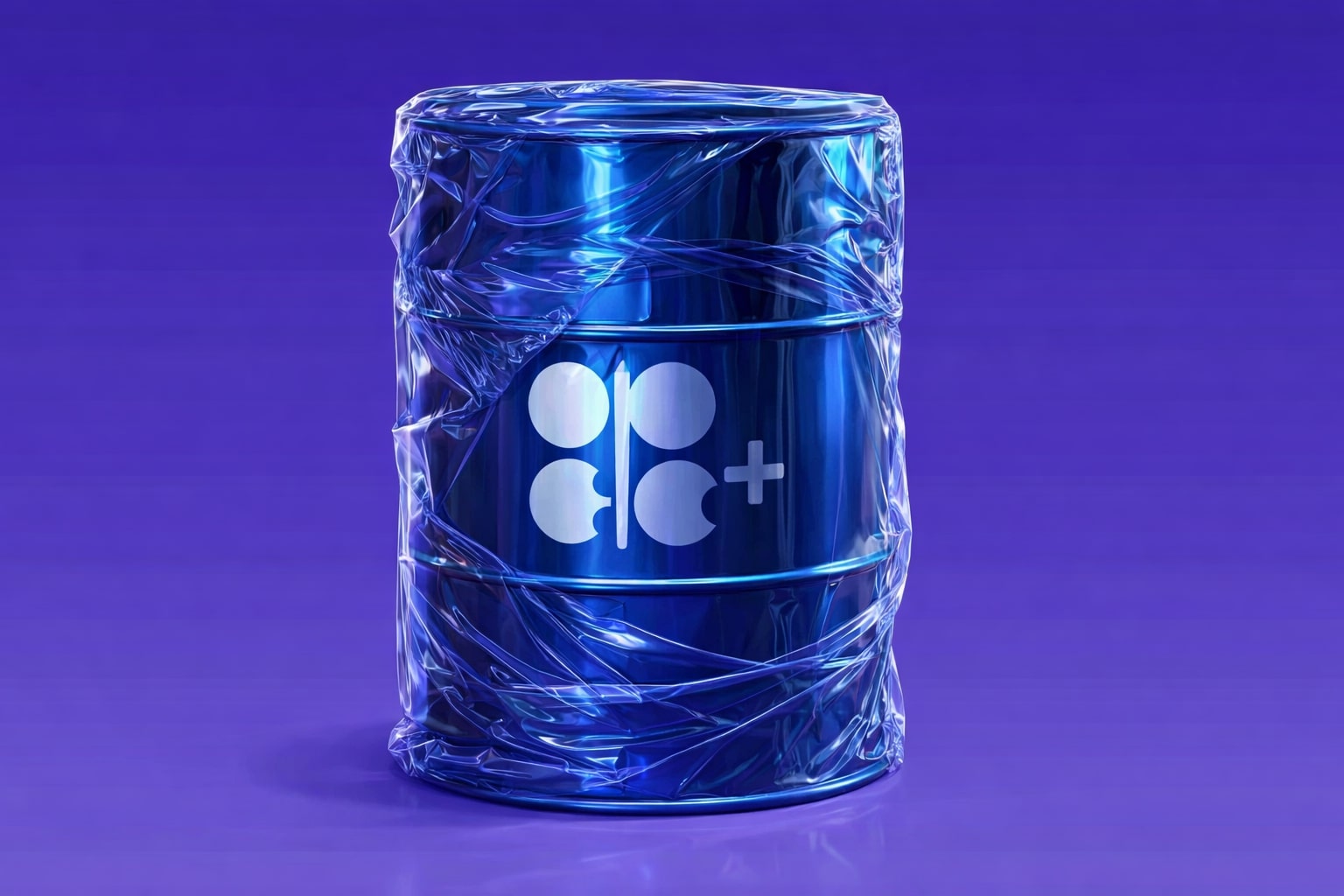
Oil Price: WTI at $63.52 and Brent $67.65 Face Resistance
Global oversupply, Sinopec’s demand slump, and Trump–Putin risks keep crude capped at $65–70, with downside risk toward $60–64 | That's TradingNEWS
WTI Crude (CL=F) and Brent (BZ=F) Trade Near Key Inflection Levels
West Texas Intermediate futures sit at $63.52 per barrel, up 1.29% on the session, while Brent crude trades at $67.65, a 1.21% gain. Despite this modest rebound, the market remains weighed down by oversupply. Producers from the United States, Russia, and OPEC continue to pump aggressively, creating a structural glut that limits upside momentum. The $65 level in WTI is now the most immediate line in the sand, repeatedly acting as both resistance and support over the past year. Brent, meanwhile, faces a ceiling at $68–$70, a zone that traders will watch closely as demand outlooks darken.
Supply Pressures Mount Across Global Oil Markets
Recent data underscores the heavy supply backdrop. Angola’s production slipped below 1 million barrels per day in July, marking the first sub-million level since its OPEC exit in early 2024. The country’s struggles to reverse declining output highlight broader challenges in Africa, where underinvestment and mature fields limit supply growth. Meanwhile, Norway’s Aker BP confirmed a major discovery in the North Sea, with up to 134 million barrels of recoverable resources, adding to the Yggdrasil project that already holds around 700 million barrels. The new find strengthens Norway’s role in supplying Europe at a time when sanctions have constrained Russian flows. In Kurdistan, Norwegian producer DNO ASA resumed operations after July’s drone strikes, ramping test production to 55,000 boepd, though exports via the Iraq–Turkey pipeline remain shut since March 2023, removing 400,000 bpd from the market. At the same time, U.S. inventories contracted again, showing a short-term tightening, but storage draws have not been sufficient to erase the market’s perception of oversupply.
Demand Weakness Hits Refiners and Asian Giants
On the demand side, the world’s largest refiner Sinopec reported a 36% collapse in H1 profit, with earnings falling to $3.3 billion as lower crude benchmarks and weaker domestic fuel demand crushed margins. Gasoline consumption in China dropped 4.6% year-over-year, diesel was down 4.3%, while kerosene was the only bright spot, rising 4.2%. Electric vehicles and LNG-fueled trucks continue to cannibalize demand for traditional fuels. Sinopec’s pivot toward chemicals, with ethylene demand up 10.1%, suggests refiners see more stability outside transport fuels. This demand malaise is not limited to China. South Korea has announced petrochemical capacity cuts, while India’s refiners have resumed large-scale Russian crude purchases to shield margins. In Europe, a new veto from Poland’s president on a wind energy bill signals continued reliance on coal and hydrocarbons, though oil demand in the bloc remains capped by sluggish growth and energy transition policies.
Geopolitics Keeps Oil Markets Fragile
Geopolitics remain the most unpredictable driver. The Trump–Putin Alaska summit has markets on edge. Trump’s threat of 100% tariffs on imported semiconductors was paired with hints of tougher energy trade negotiations, though his administration continues to push “energy dominance” messaging, encouraging U.S. producers to ramp exports. On the military front, Russia escalated strikes on Ukrainian energy infrastructure just as Zelensky met with U.S. officials, a reminder that geopolitical shocks can disrupt flows at any time. Drone strikes on Russian refineries have already caused fuel shortages in the Far East, showing how fragile supply chains remain.
Technical Landscape: WTI and Brent Show Heavy Resistance
From a technical perspective, WTI’s rally toward $63–65 has repeatedly stalled, suggesting the market is consolidating within a soft range rather than breaking into a new uptrend. A clean move above $65 could unlock upside toward $70, but failure here risks a slide back to $60, a level last tested in early summer. Brent crude faces its own key level at $68–70; any rejection from this zone would likely send prices back toward $64. Indicators like RSI remain mid-range, reflecting hesitation rather than conviction.
Investment Outlook: Buy, Sell, or Hold?
When balancing the numbers, the picture tilts bearish. Supply continues to outpace demand, with Angola unable to raise production, Kurdistan hampered by infrastructure, but U.S., Russian, and OPEC+ barrels still overwhelming the system. Demand signals are fragile—Sinopec’s collapse and China’s shrinking gasoline market show structural shifts that are not easily reversed. Technicals suggest consolidation, not breakout, and resistance levels are holding firm. While short-term rebounds on geopolitical shocks are always possible, the structural story remains one of oversupply and weak demand. On that basis, Oil (CL=F, BZ=F) looks like a Sell at current levels near $63–67, unless $65 in WTI and $70 in Brent are convincingly broken with volume.
That's TradingNEWS
Read More
-
UCO ETF Price Forecast: Can NYSEARCA:UCO at $18.57 Ride a 2026 Oil Squeeze?
18.12.2025 · TradingNEWS ArchiveStocks
-
XRPI at $10.50 and XRPR at $14.93 Hit XRP ETF Lows While XRP-USD Holds $1.84 After 30 Days of Inflows
18.12.2025 · TradingNEWS ArchiveCrypto
-
Natural Gas Price Forecast: Henry Hub Holds Around $4 as EIA Draw Hits 167 Bcf
18.12.2025 · TradingNEWS ArchiveCommodities
-
USD/JPY Price Forecast: Pair Holds Above 155 As BoJ And US CPI Set Up A Major Break
18.12.2025 · TradingNEWS ArchiveForex



















